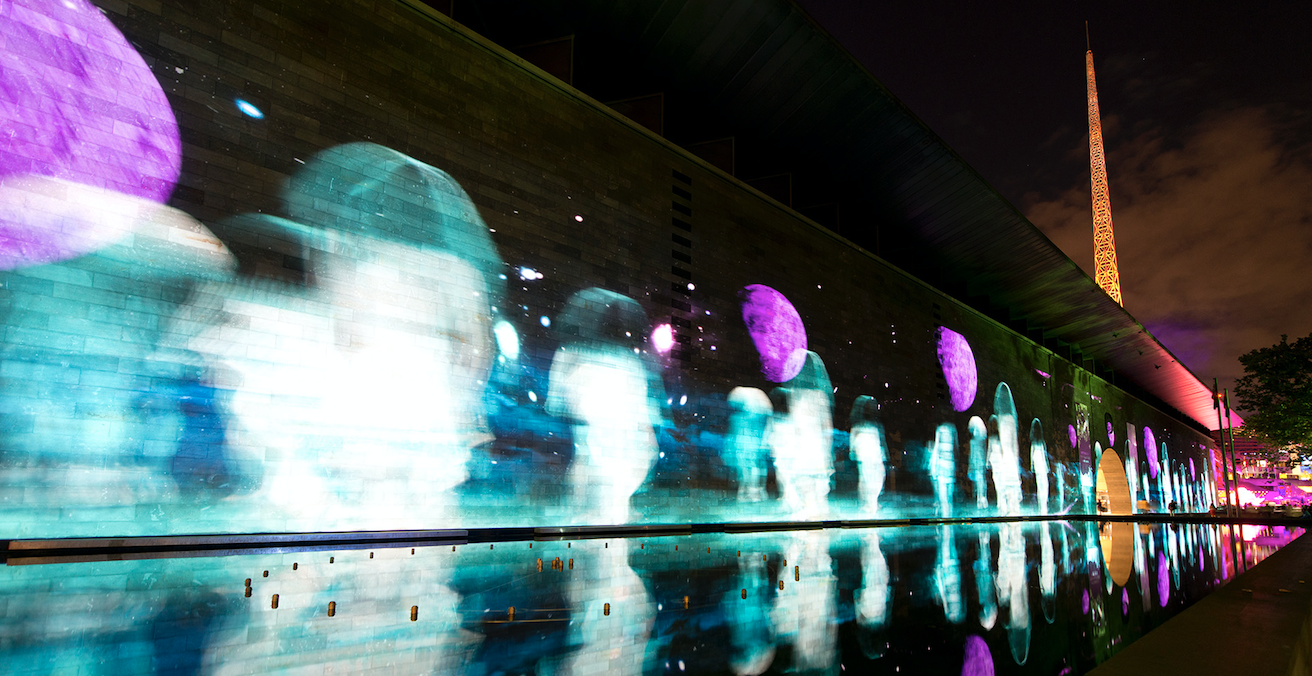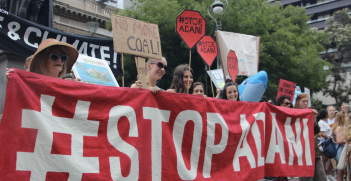The Soft Power of Smart Cities: The Giant Missing Bit

While Australia’s “soft power” objectives and its “smart city” ambitions and strategies currently seem to develop independently, their convergence, in the long run, is inevitable. The “soft power” of “smart cities” could be measured, but key soft power resources should be properly integrated into the evaluation framework.
In the age of progressing urbanisations, cities are becoming the key hubs of the global economy and important centres of soft power. They play the leading role in attracting and managing immigration workforces, generating tourism, attracting investments and developing sustainable international relations. Cities stand out on the world stage as key players in international relations alongside national governments. They develop unique urban identities that serve as magnets for global dwellers, tourists, skilled creatives, immigrants and expatriates. City-diplomacy has become an integral part of public policy through urban soft power and the power of “attraction” to local residents and global visitors. While Joseph Nye originally defined soft power as a country’s ability to influence others through persuasion, ideas and cultural attraction, urban soft power is the legitimate evolution of this concept. It stands for influence, cultural exchange and the reputation of cities in the context of globalisation reshaping urban policy-making and governance.
However, the age of globalisation also heralds other changes in urban economies and the decentralisation of diplomacy and soft power to subnational levels. Drastic advances in technology and innovation, especially in the field of communication and transportation, have significantly increased the importance of digital technologies and the strategic use of big data. To compete in a globalised world, smart cities have risen as a more productive urban model that can employ the power of data and digital technologies to improve people’s quality of life.
In 2016, the Australian government joined this global movement with the launch of its Smart Cities Plan. This is an urban development model driven by technology and innovation. It employs digital technology to accumulate, organise and manage big data – the vast amounts of information generated by and accessible to an increasing number of people – to improve economic and political efficiency to facilitate urban development. The smart city framework is growing in the scope of its research and implementation in Australia and beyond. Specifically, in the Asia-Pacific region, Singapore stands out as another “smart” leader with its multimillion-dollar Smart Nation Program, which it launched in 2014.
Both Australia and Singapore invest significant resources to enhance national digital economies and facilitate urban progress. Furthermore, both have important foreign policy objectives and ambitions in the Asia-Pacific region. In 2018, the Singaporean and Australian governments established the Smart Cities Network in collaboration with the Association of Southeast Asian Nations (ASEAN). Australia has committed to invest AU $30 million to the development of the network in the next five years to advance sustainable urbanisation in ASEAN. While Australia and Singapore are striving to advance their influence in the region to strengthen their leading positions among ASEAN countries, especially amidst growing competition from China, both countries lack expertise in evaluating diplomatic efforts and employing soft power as a foreign policy tool.
For example, in 2018 the Department of Foreign Affairs and Trade (DFAT) conducted the Soft Power Review and solicited contributions from civil society to explore innovative ways in which Australia could better leverage its assets and build effective partnerships to advance national reputation, security and prosperity. One of the most important objectives of this review was to identify reliable ways in which Australia can measure its soft power in the Asia-Pacific. While “soft power” objectives and “smart city” ambitions and strategies currently seem to develop simultaneously but separately, their convergence in the long-run is inevitable. In my research, I argue that Australia could significantly increase its soft power in the Asia-Pacific and improve its smart city expertise if it was able to recognise the importance of the “giant” missing bit that is currently overlooked in smart city evaluation framework.
The missing bit
The 21st century marks the age of rapidly increasing urbanisation and the rise of “smart cities.” It has also witnessed a global boom in the museum industry. The fast growth of the museum industry is occurring across both developed and developing countries. There is now no single continent without a museum – in Antarctica, there are already five museums. More than 40,000 new museums were built around the world in the last 40 years, which is half of all museums that exist to date. From 2007 to 2017, China alone established 3,000 new museums. Such rapid growth of the museum industry indicates these cultural institutions are no longer mere repositories of cultural heritage, solely dependent on public or private funding.
Museums have earned their important place in urban creative economies as powerful new players that make a significant contribution to the economic and cultural development of cities. They do it by accelerating tourism, generating economic activity in cultural neighbourhoods and attracting international investment. The Guggenheim Bilbao transformed the economic landscape of a small provincial city in Spain into a premier tourist destination in Europe and remains the best example of the powerful role of museums in urban development. However, Australia can boast its own impressive examples.
The 2018 Australian Arts Council’s report stressed that nearly 50 percent of tourists visit Australia seeking cultural experiences, while 43 percent directly engage with arts during their stay. More importantly, the report revealed that the most popular activity for cultural tourism has been visiting museums and galleries, as they are key urban attractions and cultural centres. Let’s take Melbourne as an example. Melbourne is home to Australia’s busiest galleries and museums and is the national urban star for cultural tourism. It brings AU $2 billion per year to Victoria through international cultural tourism. Since 2004, Creative Victoria has facilitated 23 major international art exhibitions through its highly successful Melbourne Winter Masterpieces program, attracting more than 5 million attendees. In 2017 alone, the National Gallery of Victoria’s Van Gogh and the Seasons exhibition attracted nearly 500,000 visitors and generated nearly AU $56 million in revenue.
These examples convincingly illustrate how museums in the 21st century can become key centres of soft power through their ability to attract visitors. Museums help to elevate the global visibility of cities and to shape their urban identities. They achieve this by hosting international cultural festivals and mega-events, facilitating urban regeneration and developing diplomatic connections with cultural institutions abroad. Even though arts and culture play one of the most important roles in liveability and economic vitality of contemporary cities, they are not systematically and formally incorporated into smart city initiatives. While smart cities stress the efficiency of data management for more proactive strategic urban development, big data generated by museums, their visitors and activities, is not meaningfully integrated into strategic smart city planning and implementation. For example, museums as major cultural hubs and powerful social actors operate and produce large amounts of data that capture their activities locally and globally, both on-site and online.
While museums have always been important wielders of soft power, their smart capabilities in the digital age have reinforced their significance within urban environments shaping how locals, residents and tourists can perceive and interact with smart cities. Museum collections shared through metadata and application programming interfaces can enhance city branding and placemaking by offering digital avenues for exploration of a city’s cultural history, heritage and resources while stimulating global public interest in a city’s places, services and offerings.
Furthermore, data-driven augmented reality and virtual reality museum applications that are connected to heritage city trails and cultural sights of historical significance provide a robust platform for the development of sustainable tourism. Strategic analysis of visitation data and audience behaviour within urban environments, enabled by these museum applications, can help design convenient, enjoyable and safe urban experiences turning smart cities into global hubs and popular traveling destinations. Finally, new sensor technologies capturing human emotions in museums and cultural heritage sites in combination with sentiment track of geo-tagged data from popular social media can help smart cities to assess their social and cultural impacts upon travellers and residents.
Big data generated by contemporary museums – if properly integrated into the smart city evaluation framework – could significantly improve the efficiency of smart cities in their efforts to attract global capital in the form of sustainable tourism by enhancing placemaking and city branding. However, the capacity of contemporary museums to supply reliable data are currently overlooked by municipal governments in Australia. There is no single example yet of a smart integrative data curation system that would connect museums and cultural heritage sites with local city businesses for collaborative data sharing, analysis and strategic use. There is a need to develop such a system that can transform the abundance of disintegrated big data into a platform of data intelligence that can enhance smart city work and inform urban design strategies. Without effective data evaluation, reporting and management processes, smart cities in Australia are poorly placed to identify and assess the value, outcomes and impacts of their efforts in generating soft power.
Dr Natalia Grincheva is a research fellow in the Research Unit of Public Cultures at the University of Melbourne. She is a lead CI and conceptual designer of the digital mapping system Museum Soft Power Map. She is a dedicated scholar with internationally recognised expertise in cultural /digital diplomacy, soft power and contemporary museology. She is the author of Global Trends in Museum Diplomacy, she also has published more than 30 research articles, book chapters and reports in prominent academic outlets.
This article is published under a Creative Commons License and may be republished with attribution.





